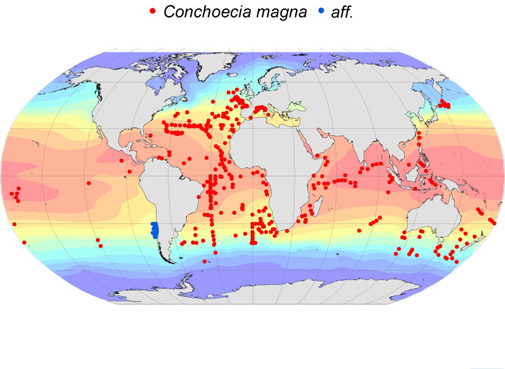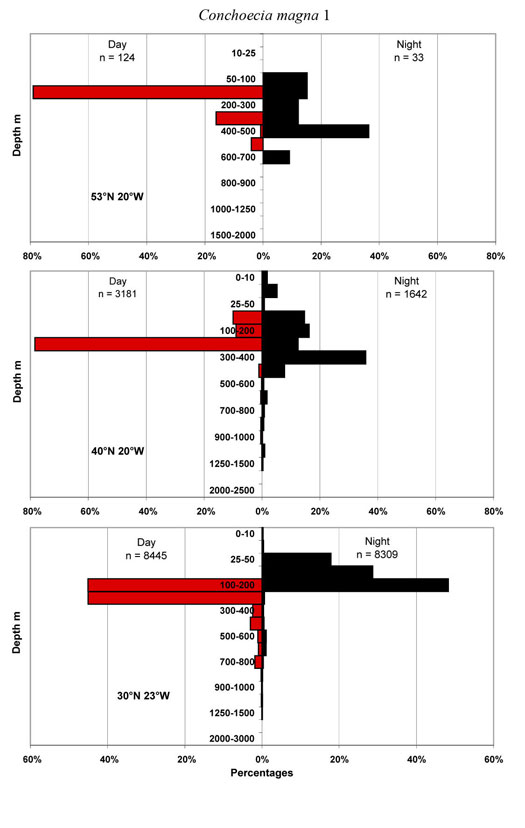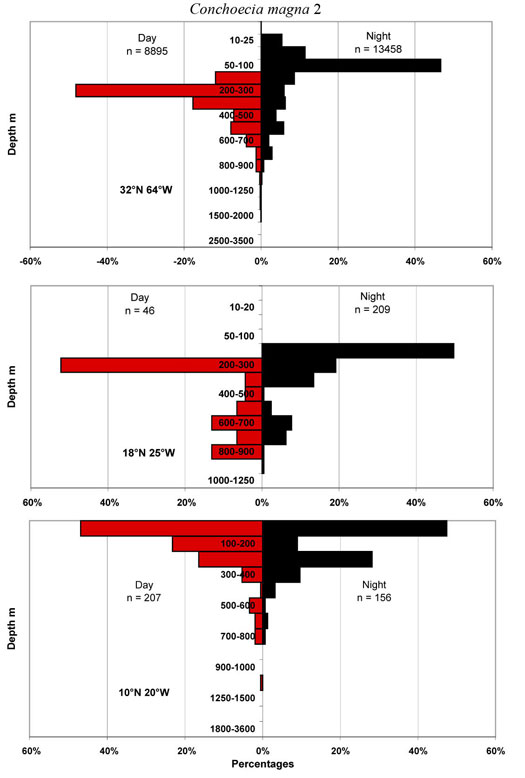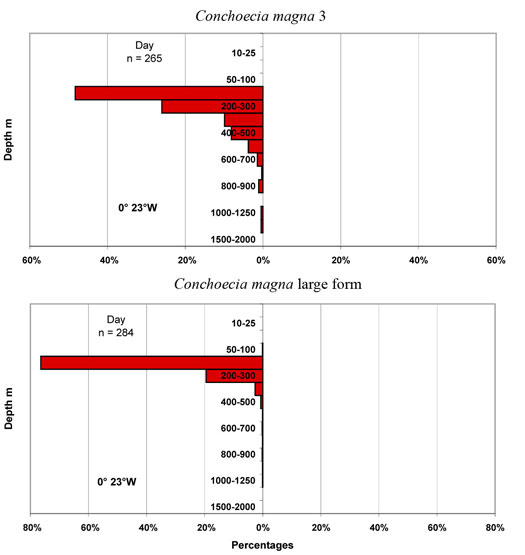Atlas of Atlantic Ostracods
Taxon details
Conchoecia magna Claus, 1874
- Order:
- MYODOCOPA
- Suborder:
- Halocypridina
- Family:
- Halocyprididae
- Subfamily:
- Conchoecinae
- Size range (females):
- 1.7-2.3 mm
- Size range (males):
- 1.5-2.3 mm
- Depth:
- epi-/mesopelagic
Notes
Records: 706(+ 83 records of .aff
This species has repeatedly been
confused with both C. hyalophyllum and C. parvidentata. Moreover,
specimens from both the North and South Pacific formerly attributed to this
species are not the same, but are yet to be formally described. Records from
the North Pacific have neither been included in the count given above, nor have
their distributions been included in the maps. Müller (1906) described a
subspecies from the
Living specimens are translucent with orange and red pigmentation associated with the bases of the limbs.
| N. Atlantic | n | Mean mm | s.d | Range mm | Female | 217 | 1.99 | 0.080 | 1.80-2.18 |
|---|---|---|---|---|
| Male | 165 | 1.93 | 0.054 | 1.84-2.08 |
| A-1 | 23 | 1.22 | 0.093 | 1.08-1.38 |
| A-2 | 11 | 0.79 | 0.029 | 0.74-0.84 |
| A-3 | 14 | 0.58 | 0.043 | 0.52-0.70 |







